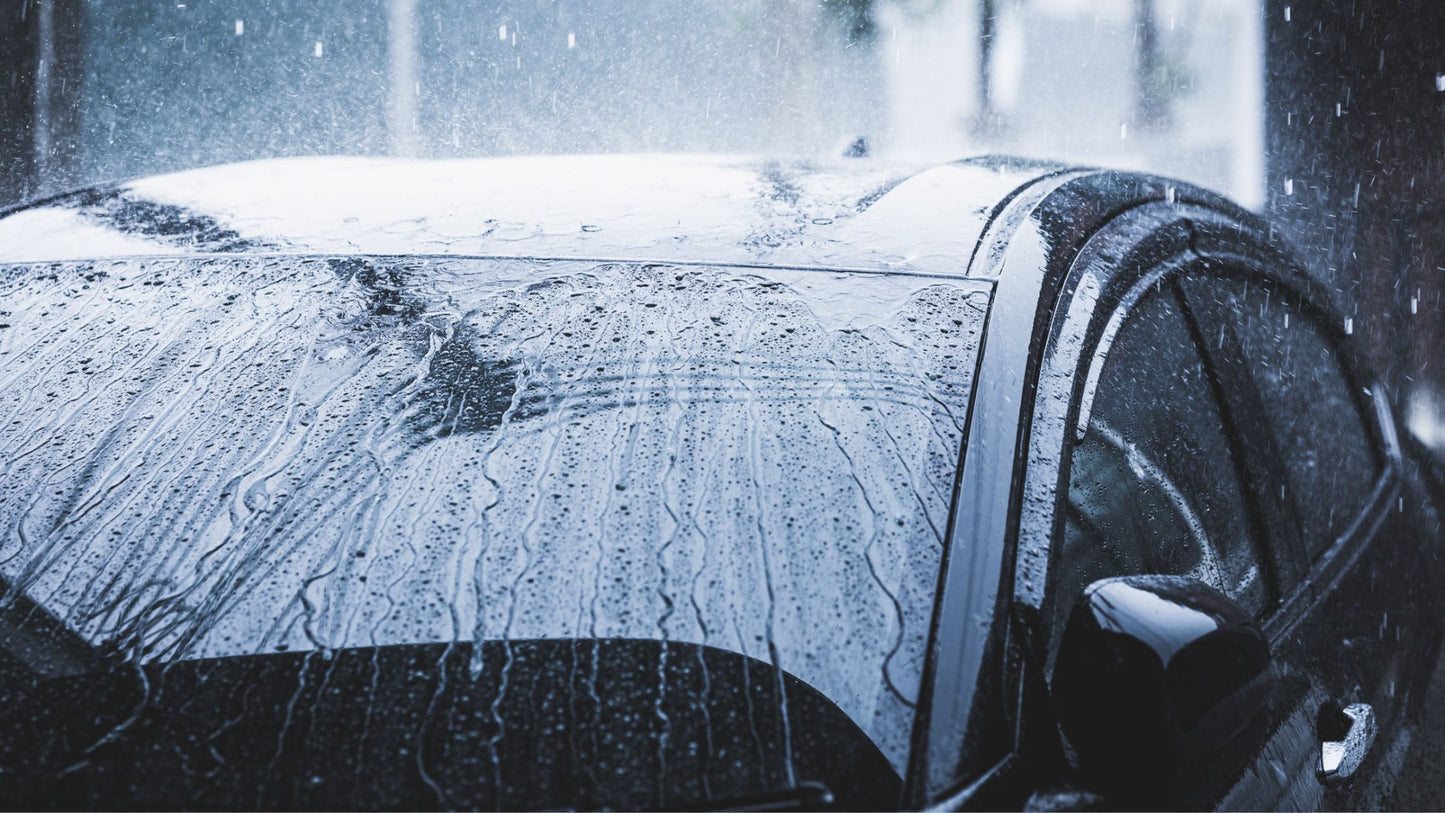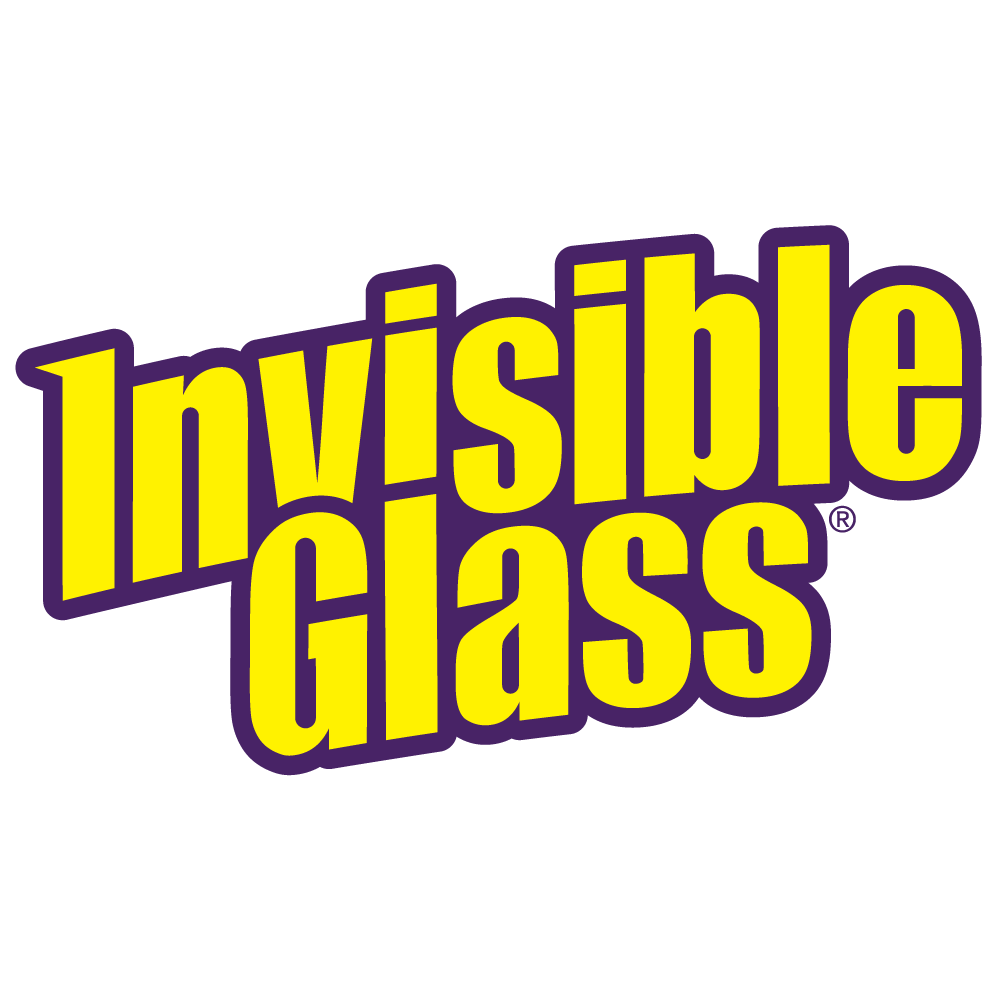
Some motorists enjoy the sound of relaxing raindrops tapping on sunroofs and windshields. However, most would agree that downpours are no fun for anyone unlucky enough to be out on the roads. Fortunately, you can take steps to prepare for the rainy season and drive through showers – or downpours – with confidence.
This post will detail the steps you must take to prepare your car for the rainy season: Apply a wax/sealant product post-wash, clean your windshield every 1-2 weeks, maintain your windshield wipers, and apply a rain-repellent product to your windshield.
These steps will help protect you, your passengers, and your vehicle.
Apply a wax/sealant product post-wash
Most car owners will go out of their way to wash their vehicle to remove dirt and grime, but few take the time and extra steps required to apply a protective layer post-wash. Using a wax or synthetic sealant after washing is the most crucial step to keeping your car clean. Not only will waxes protect your paint, but they’ll also wick water off your vehicle.
Repel water to increase visibility
Without wax, water on your car’s exterior forms a sheet-like appearance. Water sheeting can cause visibility issues as you drive as airflow carries it from your hood onto your windshield.
Both waxes and sealants equip your auto with a temporary buffer between exterior paint and the outside world. Also, both products are hydrophobic or water-resistant, causing water to bead on your car’s surface.
These beaded water droplets will not be able to cling to your vehicle’s slick, waxed or sealed surface and will readily fly from your exterior when you hit the gas. In this way, waxes and sealants help protect visibility as you drive.
Protect your exterior from pollutants
Precipitation is filled with pollution, so as rain falls, contaminants find their way onto your car’s surface. Eventually, the water in these raindrops evaporates, leaving pollutants behind. If allowed to remain on your vehicle, these corrosive substances can cause severe damage to your clear coat and paint.
Waxes and sealants not only add a protective, wicking layer to your car’s surface but will also decrease the amount of rainwater on your car. Less rainwater means less exposure to pollutants.
How to apply waxes and sealants
To learn everything there is to know about wax and sealant application, click here for an in-depth guide.
Or, if you prefer, here’s a handy quick rundown of the application process for most paste-like protective products. (Always read the instructions on the back of the label before applying.)
Applying Wax or Sealant
|
Step 1 |
🚘 Your car must be freshly-washed for a wax or a sealant to adhere properly. Wash with water and car shampoo if needed. |
|---|---|
|
Step 2 |
🚘 Dry the surface with a microfiber towel if you haven’t yet done so. |
|
Step 3 |
🚘 Using an applicator pad, choose a small area and apply a high-quality wax or sealant. |
|
Step 4 |
🚘 Buff in small, circular motions, waxing one panel of your car at a time. |
|
Step 5 |
🚘 Remove excess polish with a microfiber towel. |
Clean your windshield every 1-2 weeks
A dirty windshield doesn’t just look bad; it presents safety issues for you and your passengers. Outside elements such as airborne debris, dust, and pollen can cloud your windshield’s exterior surface. Likewise, smoke or cabin humidity can cause a haze on interior glass surfaces. Each can make it difficult to see the road, especially in heavy rain. Fortunately, a routine windshield cleaning can prevent most of these issues.
Use quality products to keep your windshield clean of dirt and grime on the outside and built-up haze on the inside. Check out our guide on inside-out windshield cleaning here for an in-depth breakdown.
Quick tips on windshield cleaning
Cleaning your windshield takes minimal time and effort. A quality glass cleaner is the most important factor in quick, effective cleaning. We recommend using a glass cleaner that doesn’t have added color or scents, which can lead to streaking or a light haze lingering on the glass. If you need a glass cleaner, consider Stoner’s Invisible Glass. It contains no dyes or scents and offers a streak-free guarantee – making it an effective choice for any detailer.
Windshield cleaning techniques
Before applying any glass cleaner to the exterior windshield, lift the wiper blades, so you have full access to the glass. Apply a conservative amount of glass cleaner to the windshield, spraying from top to bottom to form a thin, even layer. Wipe in side-to-side or up-and-down motions across the glass using a fresh microfiber towel. We recommend working from top to bottom to ensure the dirty solution doesn’t drip down onto already-cleaned areas.
Apply a rain-repellent product
Once you have a clean windshield, consider adding a rain-repellent product to your exterior. Rain repellents cause water to bead and simply roll off the sides or top of your windshield as you drive. Less water clinging to your glass means less water being moved around by your wipers, allowing you to see during the heaviest downpours.
Applying rain repellant
Rain repellent products come in several forms that vary by convenience. We’ll go over the most common varieties below:
Washer Fluid Additive
Washer Fluid Additives are concentrated rain-repellent products that you pour directly into your washer fluid reservoir. The additive mixes with standard windshield washer fluid, so it can be applied whenever needed. While this is the most straightforward repellent to use, it is also the weakest. If you’re looking for longer-lasting results, read on.
Two-in-one Glass Cleaner with Rain Repellent products
Want to clean your glass and repel rain in one quick step? Consider a two-in-one Glass Cleaner with Rain Repellent product. These products provide the cleaning efficiency of a standard glass cleaner while also offering repellency. Simply spray on the glass, and wipe it away. Not only will your windshield be clean, but it’ll also repel water for weeks. The only drawback to two-in-one products is that they aren’t quite as effective as standard rain repellents. Still, you can’t argue with the ease of application.
Pure rain repellent products
Standard Rain Repellent sprays are the way to go if you’re looking for effectiveness. They require additional steps and a bit more time to apply but ultimately last the longest of the three. Always check the back of the product for the application procedure, but you can follow the steps below if you opt for Stoner’s Rain Repellent.
|
Step 1 |
💧 Apply spray onto a microfiber towel and wipe in circular motions, covering the entire windshield. Apply more product as needed. |
|---|---|
|
Step 2 |
💧 Allow the whole windshield to become hazy before buffing it with a wet microfiber towel. |
|
Step 3 |
💧 Dry off excess water/solution with a fresh microfiber towel. |
Additional safety considerations
In addition to standard cleaning, waxing, and use of rain-repellent products, spot-check these parts of your vehicle to ensure safe rainy-season travel.
Tire tread
Tire treads are key to maintaining road grip in wet, rainy weather. Inspect your treads regularly to monitor for wear. A tread inspection can be done anytime you drop your vehicle off for maintenance, or you can measure the tread yourself using a standard U.S. penny.
To use the coin method, take a penny and insert it into the tread. Turn the coin until Abe Lincoln’s head is facing down and out. If you can see Lincoln’s face, the tread depth is below 2/32 of an inch – meaning you’ll want to consider replacing the tire. Always check multiple areas of each tire to ensure accuracy.
Headlights
Over time, headlights become susceptible to wear and form oxidation, chips, or cracks. Over time, oxidation and other headlight damage can cause a cloudy layer to form, dampening the bright beam. Oxidation can cause visibility issues in rainy weather if the headlight unit becomes too clouded.
Ample lighting is critical for seeing well and being visible to other cars, so correcting headlight oxidation is essential. Check your headlights monthly for signs of fog or cloudiness building up. If there are, you may want to consider restoring your headlight unit or replacing the plastic cover.
Brake Pads
Rainy weather can cause delays and sudden stops in traffic, so you’ll want your brake pads to be in good shape before you hit the road. You will probably want your mechanic to do any technical work on your brakes, but you should listen and look for signs that it’s time to take your car in for service.
As you drive, listen for grinding, growling, or squealing. If you hear unusual sounds when you press the brake, it often means the pads have worn through and are grinding into the rotors. Also, if you notice any vibration in the wheel or pedal, that’s a sure sign that you need to get your brakes checked out by a professional.
Rain, rain, go away
Every day won’t be sunny, but no matter. Driving through rainy weather doesn’t have to be stressful, and following these tips will keep you and your passengers safe on the road: Apply a wax/sealant product post-wash, clean your windshield every 1-2 weeks, maintain your windshield wipers, and apply a rain repellent product to your windshield. Happy travels to you, whether wet or dry!



